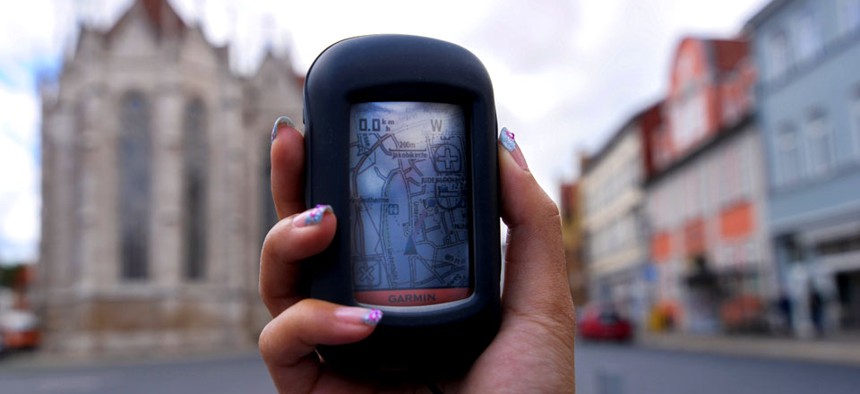GPS Jammers Could Knock Out Signals in a Medium-Sized City

Candy Welz/AP
U.S. still has no defense against GPS jamming or spoofing.
A single well-placed GPS jammer or spoofer could disrupt signals in an entire region of the United States, an official from the Homeland Security Department told a GPS conference in Nashville, Tenn.
At the same time, the U.S. still “lacks the capability to rapidly detect and geo-locate jamming or spoofing of GPS services,” DHS program manager John Merrill told the annual meeting of the Civil Global Positioning System Service Interface Committee, a global forum that fosters interaction between the U.S. and worldwide GPS users. The U.S. developed and operates GPS.
Merrill did not define the size of a region a GPS jammer could knock out, but Jules McNeff, who spent 20 years in the Air Force working on GPS and is now vice president for strategies and programs at Overlook Systems Technologies Inc., a GPS engineering firm in Vienna, Va.,estimated a one watt GPS jammer could blanket a medium sized city.
Logan Scott, president of a company with GPS expertise called LS Consulting, said in a May webinar run by Inside GNSS that a GPS jammer with one-tenth of a watt of transmit power has a range of 9.4 miles, a one watt jammer, 29.8 miles, and a fen watt jammer, 94.2 miles. Inside GNSS is a magazine on GPS and other satellite navigation systems operated by China, the European Union and Russia, collectively called Global Navigation Satellite Systems.
Consumer jammers at these power levels can be purchased on the Internet primarily from Chinese manufacturers at prices as low as $40.
DHS and the Defense Department have worked to develop a jammer location system that picks up and feeds jammer signals to a master station run by the National Geo-Spatial Intelligence Agency since 2010, but to date the only feeds it receives are from sensors located at Newark Liberty International Airport in New Jersey, Merrill told the conference.
The Federal Aviation Administration and the Federal Communications Commission spent two years -- from March 2009 to April 2011 -- locating just one GPS jammer used on the New Jersey Turnpike. That jammer interfered with an FAA system that provides enhanced navigation signals to aircraft in the vicinity of the airport for precision approach, departure procedures and terminal area operations.
McNeff called the jammer location system a “concept,” not an operational countrywide system.
The FAA plans to place heavy reliance on GPS between now and 2030, with the satellite system as the core of its Next Generation Air Transportation System, and plans to decommission its ground based VHF omnidirectional radio, or VOR, by then.
Jammers can affect GPS as well as other GNSS systems. In September 2012, the FAA set up a GNSS Intentional Interference and Spoofing Study Team to “identify technical, political, legal, and operational ways to mitigate the impact of GPS spoofing and jamming.”
Deborah Lawrence, manager of FAA's navigation programs, told the conference that the study team will, by the end of September, provide the agency with “specific, actionable recommendations” on how to counteract spoofing and jamming.
--
Explore the future of technology in government at Nextgov Prime, Oct. 15-16 in Washington. Registration for federal employees is free.






